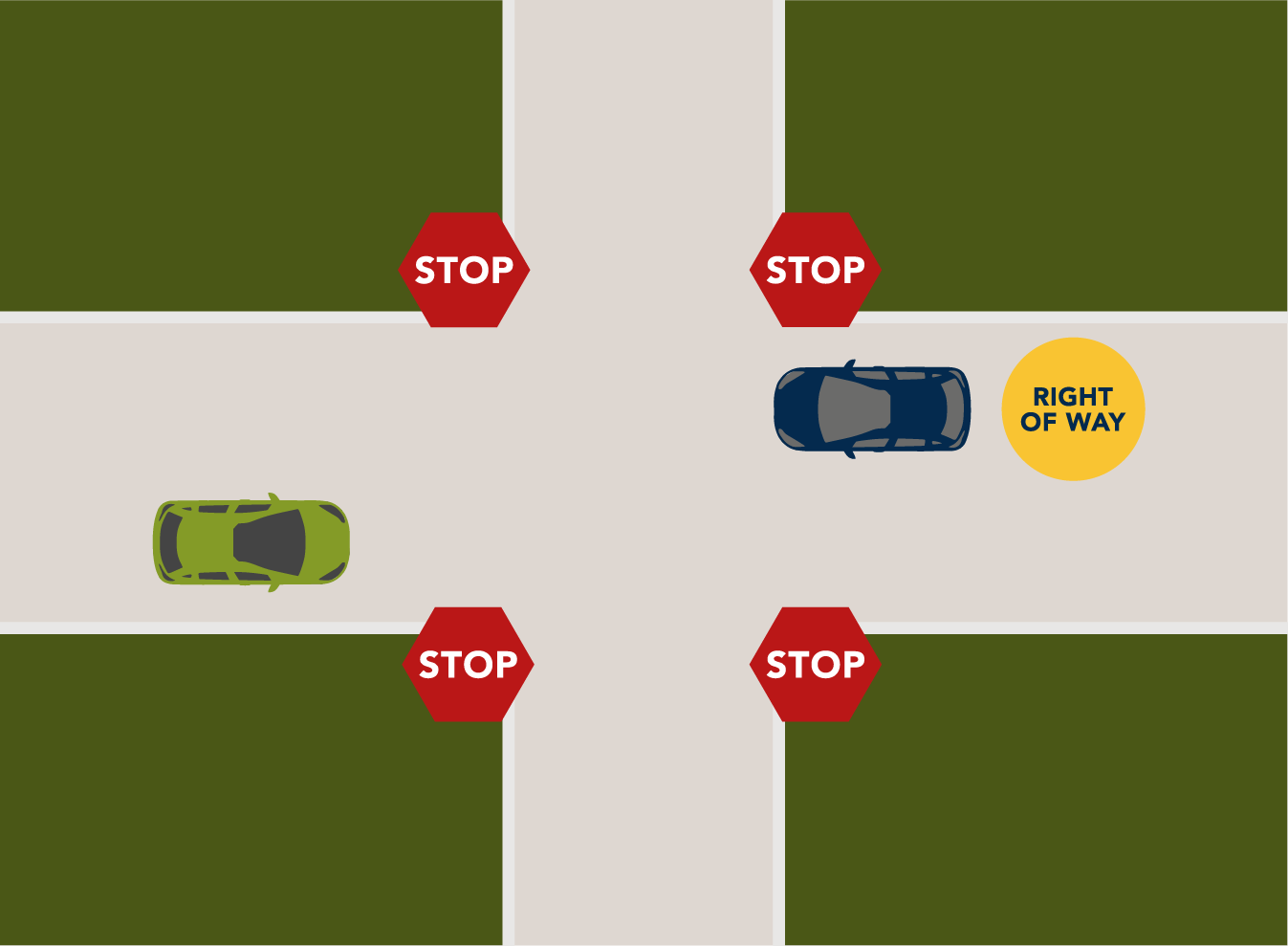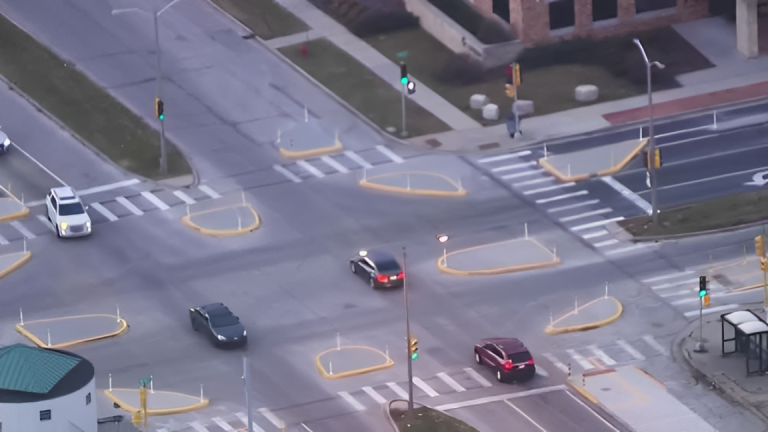In Washington State, right of way laws are designed to ensure safe and orderly traffic flow by specifying who has the priority to proceed in various driving situations. These rules help prevent accidents and promote fairness on the roads.
What Does “Right of Way” Mean?
“Right of way” refers to the legal right of a vehicle or pedestrian to proceed before others in a particular situation. Understanding these rules is crucial for all road users to navigate intersections, crosswalks, and other traffic scenarios safely.
Key Right of Way Rules in Washington State
- Intersections Without Traffic Signals or Signs:
- When two vehicles arrive at an intersection simultaneously, the driver on the left must yield to the driver on the right.
- At a four-way stop, the first vehicle to arrive has the right of way. If two vehicles arrive at the same time, the driver on the right has the right of way.
- Pedestrian Crosswalks:
- Drivers must yield to pedestrians in marked crosswalks.
- Even if a crosswalk is unmarked, pedestrians have the right of way when crossing at intersections.
- Emergency Vehicles:
- When an emergency vehicle with flashing lights and sirens approaches, drivers must pull over to the right side of the road and stop until the vehicle has passed.
- If an emergency vehicle is stationary with its lights flashing, drivers should slow down and, if possible, move over a lane to provide a safe buffer.
- School Buses:
- When a school bus has its red lights flashing and stop sign extended, all vehicles must stop, regardless of the direction of travel.
- On divided highways with three or more lanes, vehicles traveling in the opposite direction are not required to stop.
- Roundabouts:
- Vehicles entering a roundabout must yield to traffic already circulating within it.
- When exiting, drivers should signal and yield to pedestrians in crosswalks.
- Merging onto Highways:
- When merging onto a highway, drivers must yield to traffic already on the highway.
- When changing lanes, drivers must yield to vehicles in the lane they wish to enter.
Special Considerations
- Uncontrolled Intersections: At intersections without traffic signals or signs, the driver on the left must yield to the driver on the right.
- Alleyways and Driveways: When emerging from an alley, driveway, or building, drivers must stop before driving onto a sidewalk and yield to pedestrians and cyclists.
- Railroad Crossings: Drivers must yield to any train on the roadway.
Consequences of Violating Right of Way Laws
Failing to yield the right of way when required can lead to traffic violations, fines, and, in the case of accidents, liability for damages and injuries. It’s essential to understand and follow these laws to ensure safety for all road users.
Tips for Safe Driving
- Stay Alert: Always be aware of your surroundings, especially at intersections and pedestrian crossings.
- Use Signals: Always use your vehicle’s signals to indicate your intentions to other drivers.
- Exercise Patience: If you’re unsure who has the right of way, it’s safer to yield than to risk an accident.
- Educate Others: Share knowledge of right of way laws with friends and family to promote safer driving habits.
Recent Developments
In recent years, there have been discussions and changes regarding right of way laws in various states. For instance, Kentucky expanded its “Move Over” law to require drivers to slow down or change lanes for any disabled vehicles displaying emergency signals.
While this change occurred in Kentucky, it highlights the evolving nature of traffic laws across the country. It’s important for drivers to stay informed about local traffic regulations to ensure compliance and safety.
Conclusion
Understanding and adhering to right of way laws is crucial for maintaining safety and order on the roads. By familiarizing yourself with these rules and practicing defensive driving, you contribute to a safer driving environment for everyone.
Disclaimer – Our editorial team has thoroughly fact-checked this article to ensure its accuracy and eliminate any potential misinformation. We are dedicated to upholding the highest standards of integrity in our content.
























+ There are no comments
Add yours